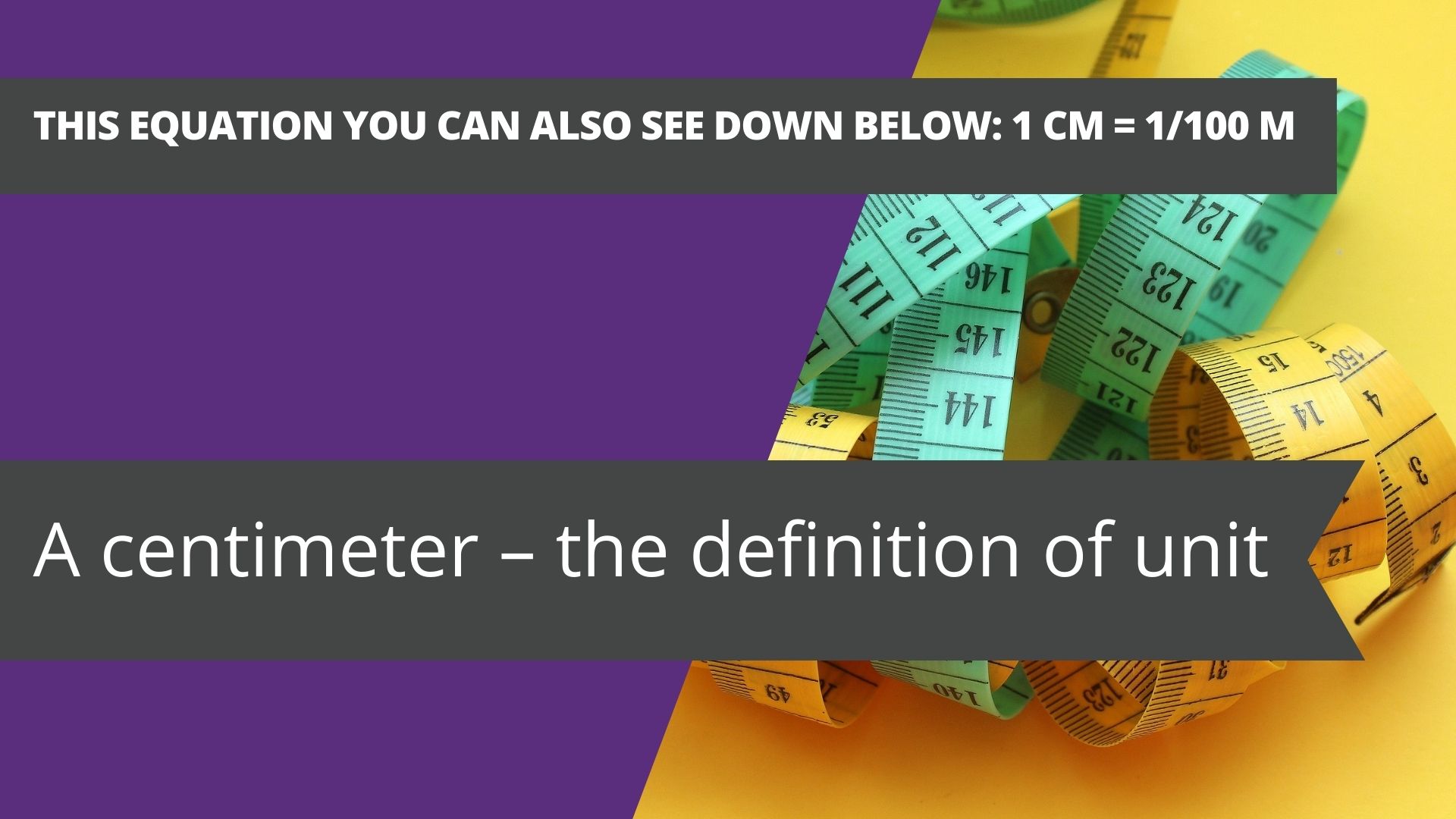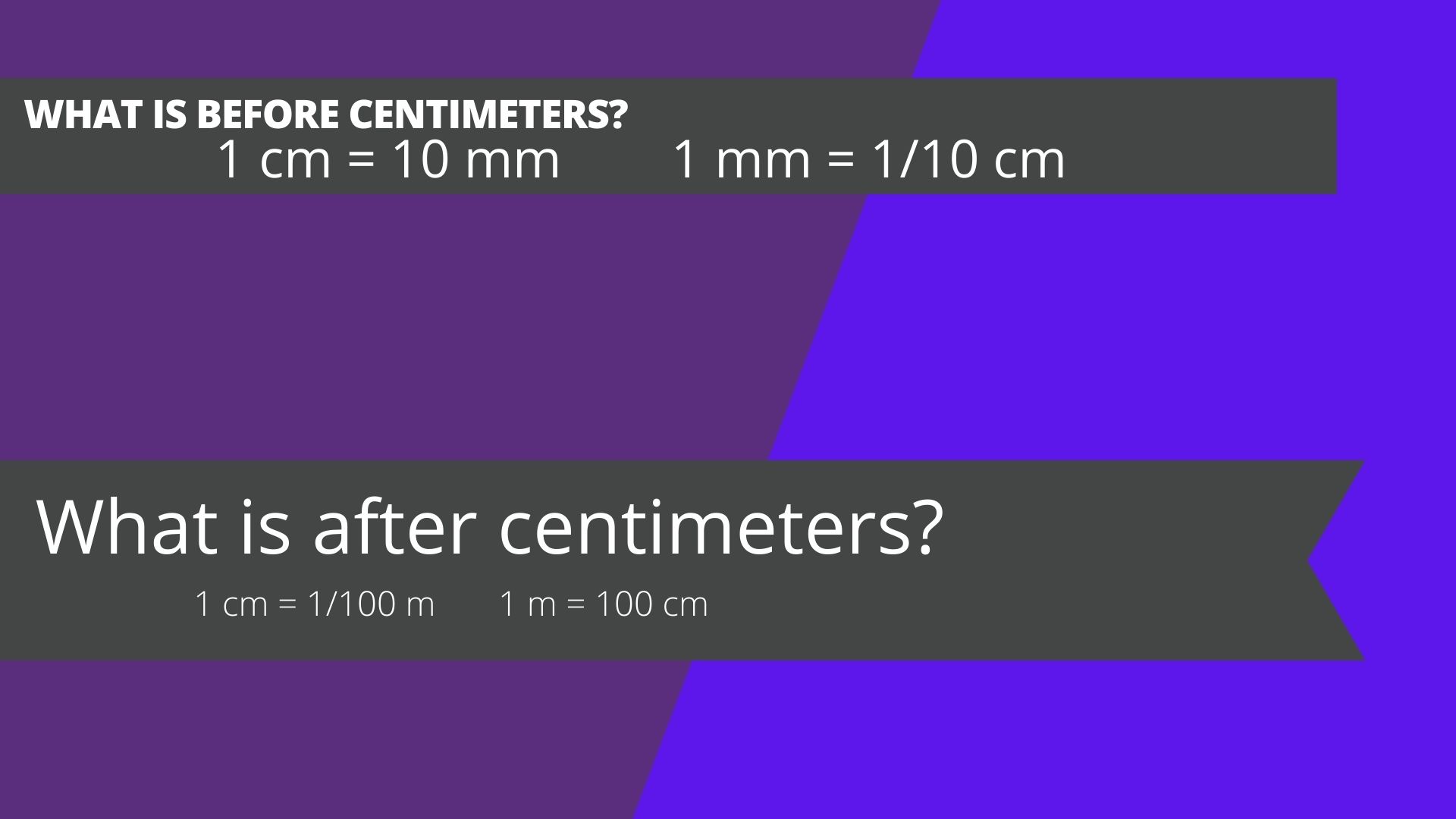What defines a centimeter?

What defines a centimeter? How does the definition of the centimeter look? How to express the centimeter in other units? If you are thinking of an answer to almost one of these 3 questions, you are in the right place.
A centimeter, like other units of the metric system, can be problematic for people living in the United States or the United Kingdom. These 2 countries have their own systems of measurement. That’s why some of these people react “just what?” when they hear the term centimeter.
But does it always have to be like that? Of course not. You can get to know what defines a centimeter in a clear way. We will prove it to you.
Are you ready? So let’s start the main part of this article. It is time to change the stereotype that it is difficult to understand what the centimeter is and what defines it.
A centimeter – the definition of unit
To know what defines a centimeter, it is needed to better know this unit. So that’s why we want to tell you a little about a centimeter in general, together with the definition of a cm.

We have mentioned it before, but now we want to emphasize it again – a centimeter is a unit of the metric system. To be more specific, a centimeter is a unit of length. It is used mostly to measure quite small distances, like the diameter of a frying pan or T-shirt’s width.
What is the definition of a centimeter? There is no established, scientific definition. A centimeter is most commonly defined as just one-hundredth of a meter. This equation you can also see down below: 1 cm = 1/100 m.
There is one huge advantage of there is no narrow definition of a centimeter – you don’t have to remember any formulas. You can just say it in your own words, in a way that will be the clearest for you.
Cm in a metric system
We want to tell you a little bit more about a centimeter within the context of a metric system.
You need to know that the metric system is sometimes called also in the full name – the International System of Units. In short, it is just the SI. Why did we pay attention to that? Thanks to this any name of the metric system wouldn’t surprise you, you will know exactly what it is talking about.
What more about a centimeter? This name is composed of two parts – centi and meter. So the main unit of length in a metric system is a meter, not a centimeter. Centi is a prefix that means, as you can imagine, 1/100.
Of course, in a metric system are more units of length than only centimeter and meter. And it is possible to define a centimeter in comparison to all of them.
Which units are we talking about? How does the relationship between a centimeter and other metric units of length look? Which metric units of length are bigger and which are smaller? You will know it from the next parts of this article.
What is before centimeters?
What is before centimeters? Which units of length in a metric system are smaller than centimeters? And, finally, what defines a centimeter in comparison to them?
The most commonly known unit what is before centimeters is a millimeter. The relationship between a centimeter and a millimeter look as follows:
- 1 cm = 10 mm,
- 1 mm = 1/10 cm.
So as you can see, the difference is quite big in this case. One centimeter is 10 times smaller than one millimeter. And, in turn, one millimeter is 10 times bigger than one centimeter.
And that’s the end of the part what is before centimeters. The most commonly used unit of length smaller than 1 centimeter is behind us. Is there also only one the most popular unit after centimeters? Let’s check it.

What is after centimeters?
So what are bigger units than centimeters in the metric system? As you remember, a centimeter is a part of a meter. So it means the meter is after centimeters.
A quick reminder of the relationship between these 2 units:
- 1 cm = 1/100 m,
- 1 m = 100 cm.
Is there any other unit that is after centimeters? Yes, we want to show you two more examples of units like this.
First of the unit which is after centimeters is the decimeter. How does the relationship between dm and cm look?
- 1 dm = 10 cm,
- 1 cm = 1/10 dm.
As you can see, the decimeter is after centimeters, but also before meters. So, to sum up, it is an intermediate result between centimeters and meters.
And the second unit which we want to mention is kilometer. Now the relationship looks like this:
- 1 cm = 0.000001 km = 10 * 10^-5 km.
- 1 km = 100 000 cm = 10 * 10^5 cm.
As you can see, the difference between cm and km is so big. It is impressive, don’t you think? The kilometer is after centimeters, but also after meters!
We have shown you the differences between cm and other metric system units.
But what about comparison with other systems, like the Imperial system of measurement or the United States customary units? We don’t forget about them. Comparison of a centimeter and a unit of length from systems used in the UK or US you can see down below.
Cm and inch – the relationship between them
What defines a centimeter? The centimeter is also defined by other units of length, not derived from the metric system.
We want to focus on an inch in this part. It is a unit used mostly in the US and UK. We can say it is kind of their centimeter. But does it mean that the values of a centimeter and an inch are similar? Let’s check.
The relationship between a centimeter and an inch looks as follows:
- 1 cm ≈ 0.39370079 inch,
- 1 inch = 2.54 cm.
Please note that 1 inch has its exact equivalent in centimeter, but 1 centimeter hasn’t.
To sum up – approximately 0.39370079 inch defines a centimeter in this comparison.

What defines a cubic centimeter?
We focused mostly on a centimeter in general, but at the end, we want to show you another way to define a centimeter, this time as a cubic centimeter.
What is a cubic centimeter? This unit, in contrast to a “normal” centimeter, is used to measure volume instead of length. It will be our starting point to answer what defines a cubic centimeter.
It will be easier if you imagine a cubic in which all sides are equal to exactly 1 centimeter. It means a cubic which height, width, and length are equal to 1 centimeter. And in consequence, a cubic which volume is exactly 1 cm3.
The equation of a cubic centimeter looks like this:
- 1 cm x 1 cm x 1 cm = 1 cm3
That’s the answer to what defines a cubic centimeter.
You just have to admit that’s one of the easiest ways of defining a centimeter. Especially in comparison to defining a centimeter with the use of inches.
What defines a centimeter – summary
Now it is time to sum up what defines a centimeter. We can distinguish 3 different factors in the context of which you can define a centimeter. Of course, there are more of them, but we rely on the information mentioned in this article only.
So what are 3 factors with which use of you can define a centimeter?
- Basic SI definition:
- Other metric units of length, e.g.:
- Units of length from other systems of measurement:
It works also when it comes to what defines a cubic centimeter too. Pick the best way for you to define a centimeter and try this knowledge in practice. We promise it will be useful not only in math classes!
Do you want to know more about a centimeter? Read our other article – know the history of a centimeter, its origin, and some tidbits.









